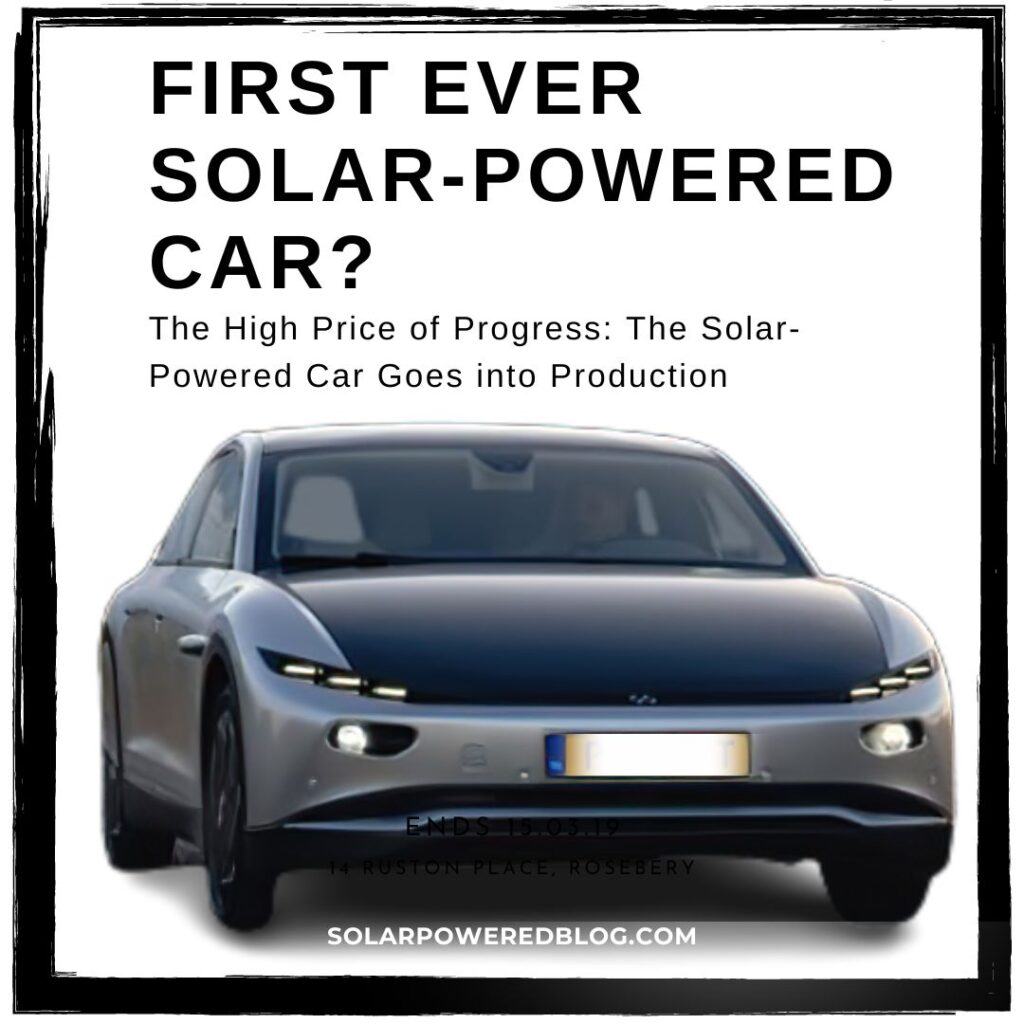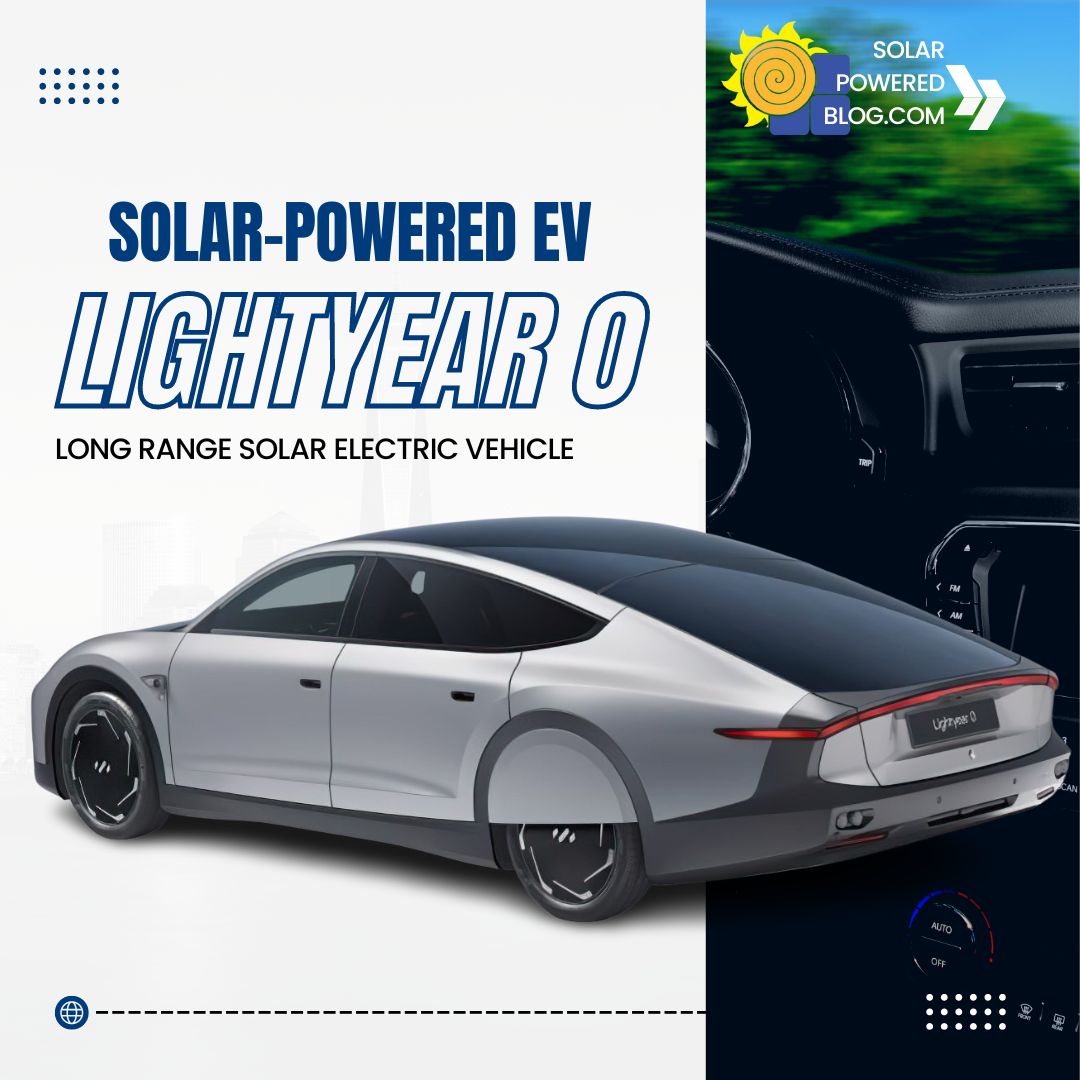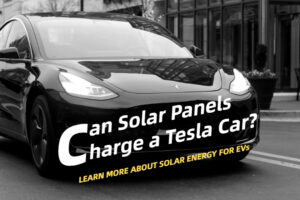The Lightyear 0 is a game-changing electric car that has the potential to revolutionize the transportation industry. Developed by the Dutch startup company, Lightyear, the four-door sedan is the world’s first solar-powered car.
It features over 50 square feet of solar panels on its hood and roof, which generate electricity as the car is driven. This allows the car to drive for longer without needing to be recharged. The solar panels provide a steady stream of electricity.
Let’s discuss the latest in EV technology, speed, and its updated price point of $262,000.
Is it more than just another electric sedan?

While other electric car companies are focusing on increasing range through the use of larger batteries, Lightyear is taking a different approach. It is by harnessing the power of the sun. This innovative approach allows the Lightyear 0 to provide more range with less battery, making it a more efficient and sustainable option.
The car’s solar panels can generate up to 43 miles worth of electricity per day. The collected solar energy can be used to power the car or be stored in the battery for later use.
The Dutch company’s revolutionary EV is not only good for the environment, but it also offers significant benefits for drivers. With the ability to drive for months without needing to be recharged, the car offers unparalleled convenience and freedom. It is also expected to be more affordable to operate and maintain than traditional gasoline-powered vehicles.
Why the Steep Price Point?
Next Major Step: Production and Volume of Solar-Powered Cars
The Lightyear 0 represents a major step forward in the development of electric transportation, and it is poised to become a game-changer in the industry.
Lightyear, the Dutch startup company behind the world’s first solar-powered sedan, has announced that production of the Lightyear 0 has begun in Finland. The vehicle is being manufactured by the same plant that formerly produces the Porsche Boxter.
“Starting production of the Lightyear 0, the first solar car, brings us a big step closer to our mission of clean mobility for everyone, everywhere,” said Lex Hoefsloot, Lightyear’s CEO and co-founder. “We may be the first to achieve this, but I certainly hope we aren’t the last.”
The company hopes to ramp up production to five vehicles per week by the end of 2023. The Lightyear 0 offers a unique and sustainable alternative to traditional gasoline-powered vehicles, and its innovative technology has the potential to revolutionize the transportation industry.
Why Is EV The Future Of Transportation?
There are several reasons why electric vehicles (EVs) are seen as the future of transportation. First and foremost, EVs are more environmentally friendly than gasoline-powered vehicles. They produce zero emissions, which means they do not contribute to air pollution and greenhouse gas emissions. This makes them a more sustainable option for transportation and can help reduce our impact on the environment.
EV Efficiency
Another reason why EVs are considered the future of transportation is their efficiency. Electric motors are more efficient than internal combustion engines, which means they can convert more of the energy they consume into usable power.
This makes EVs more energy-efficient and can result in significant savings on fuel costs.
EV Affordability
In addition, EVs are becoming more and more affordable, although not for Lightyear 0 yet. As the technology behind EVs improves and production costs decrease, the price of EVs is becoming more competitive with traditional gasoline-powered vehicles.
This is making EVs more accessible to a wider range of consumers, which is helping to drive their adoption.
More EV Charging Stations
Furthermore, the development of infrastructure for EVs, such as charging stations, is making it easier for people to switch to EVs. Increasing charging stations reduces range anxiety for EVs.
Overall, the combination of environmental benefits, efficiency, affordability, and improving infrastructure make EVs the future of transportation. You may want to read an article about how to charge your EV with solar panels.
What is a solar-powered car?
A solar-powered car is a vehicle that uses solar panels to generate electricity for its propulsion system. The solar panels are typically mounted on the roof and hood of the vehicle, and they generate electricity from the sun’s rays as the car is driven. This electricity is used to power the car’s electric motor, which drives the wheels and propels the vehicle forward.
Solar-powered cars are different from traditional electric vehicles (EVs), which use large batteries to store electricity. Solar-powered cars are able to generate electricity as they are driven, which can extend their range and reduce the need for frequent recharging. This makes them a more sustainable and efficient option for transportation.
While solar-powered cars are not yet widely available, they represent a promising future for transportation. The technology behind solar-powered cars is constantly improving, and it is expected that they will become more affordable and widely available in the coming years.
The Future of Transportation: Lightyear and Tesla To Go Head-to-Head?
Lightyear and Tesla are both companies that produce electric vehicles (EVs). However, there are some significant differences between the two companies and their products.
One of the main differences between Lightyear and Tesla is the approach they take to powering their vehicles. Lightyear focuses on using solar power to generate electricity for its EVs, while Tesla primarily uses large batteries to store electricity. Its solar-powered EVs are able to generate electricity from the sun as they are driven. This enables the car to extend its range and reduce the need for frequent recharging. In contrast, Tesla’s EVs rely on their batteries for all of their power, and the range of the vehicles is limited by the size of the battery.
Another difference between Lightyear and Tesla is the size and type of vehicles they produce. Lightyear currently only produces a single model, the Lightyear 0, which is a four-door sedan. Tesla, on the other hand, offers a wide range of vehicles, including sedans, SUVs, and trucks.
Finally, there are differences in the availability and pricing of the vehicles produced by the two companies. Lightyear is a smaller, relatively new company, and their vehicles are not yet widely available. Tesla, on the other hand, has been in business for longer and has a larger presence in the EV market. Lightyear’s vehicles are also generally more expensive than Tesla’s in the same category.
Overall, while both Lightyear and Tesla produce EVs, they differ in approach, vehicles, and availability/pricing
Conclusion: The Solar-Powered Car – A New Era of Sustainable Transportation Begins
In conclusion, the Lightyear 0, the world’s first solar-powered car, represents a major step forward in the development of electric transportation. Its innovative technology, which uses solar panels to generate electricity while driving, has the potential to revolutionize the industry and provide a more sustainable and efficient option for transportation.
However, the high cost of the vehicle may limit its accessibility to many consumers, at least initially. As the technology behind the Lightyear 0 improves and production costs decrease, it is likely that this revolutionary solar-powered car will become more widely available and affordable, paving the way for a brighter future for transportation.
Show your support by signing up for our email list today! Be part of the Solar Powered Fam!
Resources:
- Lightyear 0. (2022, November 30). In Wikipedia. https://en.wikipedia.org/wiki/Lightyear_0
- “Lightyear — Solar Electric Vehicle”. In Lightyear website.







